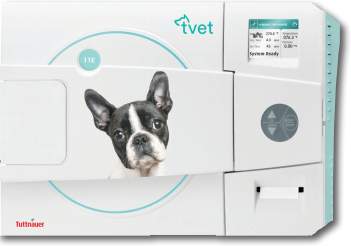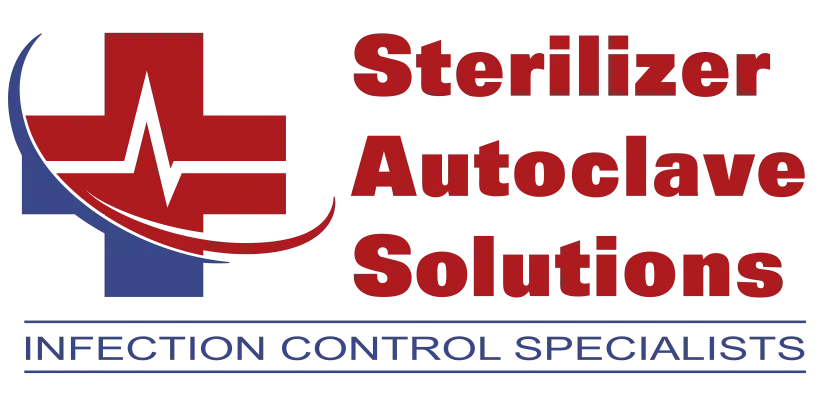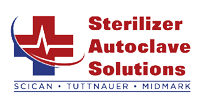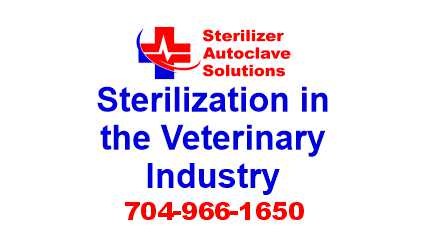Sterilization in the Veterinary Industry Leave a comment
In our previous articles, we’ve talked about many topics deriving from the subject of sterilization. Especially with the pandemic still currently a part of our lives, it’s still as important as ever. But one topic we haven’t covered yet is the veterinary industry and how they handle sanitation. There are vet specific autoclaves such as the Tuttnauer Tvet unit, but the autoclave is not the only subject of importance. Hospital Acquired Infections (HAI) are just as possible for animals to contract at a vet as a human in a hospital. Which is why the way everything in the establishment is disinfected is vitally important, not just the instruments and tools. Which is why in this article, we’re going to talk about the infection control programs within veterinary clinics. And what these facilities do to make sure that you and your pets’ health is not adversely affected.
And if you just want to talk to someone for any questions you may have, call our Free Tech Support at 704-966-1650 Option 3.
What’s the Risk?
For starters, both you and your pets are susceptible t0 contract various infections from unsafe sanitation practices within a medical establishment. The most common HAIs include, but are not limited to:
- Urinary tract infections
- Pneumonia
- Bloodstream infections
- Surgical site infections
- Infectious diarrhea
And those are just the most common, which means there are more than you probably know of.
How Do They Alleviate the Risk?
Theres a list of protocols that veterinary establishments are being urged to follow. There are things like keeping patients and employees up to date with their vaccines, keeping up good hygiene habits, and so on. We’ll list what they are and explain a bit in further detail.
The list is based off of the most effective recommended methods that every vet clinic should follow.
Setting Up An Infection Control Program
First, every vet clinic should formulate an understandable yet formal infection control plan. This can be done with or without the help of an ICP (infection control practitioner) but it is recommended that you do. Considering infection control is their expertise of course. And any veterinary clinic should have an easily distributable manual of this detailed infection control plan.
There are 3 basic areas the plan should over which we’ll also go into detail about:
- Decreasing host exposure
- Decreasing host susceptibility
- Increasing host resistance to infectious pathogens
Decreasing Host Exposure
This portion deals with cutting off any exposure to dangerous organisms around you. Examples of said organisms are thongs like: skin, wounds, fecal matter, urine, saliva, blood, discharges and aerosols. These dangerous entities can’t colonize and infect if people and pets’ exposure to them is near absent.
When dealing with pet patients, it may not be 100% possible to eliminate all forms of exposure, especially when things like skin and fluids are in question for treatment. But the plan is to significantly reduce a risk of infection through awareness as much as possible to keep the environment and everyone in it safe.
Decreasing Host Susceptibility
When it comes to decreasing the susceptibility of the host, it’s not always worrying about exposure. General exposure doesn’t guarantee contamination. But there are other methods of transmission that can increase the susceptibility to infection such as:
- Hand contact
- Fomites
- Droplets
- Airborne
- Vector borne infections
But if you follow your facility’s disinfection protocols, then the risk decreases even less. Make sure to ensure routine hand washing and keep up proper sterilization practices. Make sure that owners keep their pet’s health in top shape by their nutrition. Even discuss management of antimicrobial drugs to treat underlying diseases.
Increasing Host Resistance
Increasing host resistance essentially is the third line of defense that you can have in this situation. Vaccines are usually what build host resistance in this step, so ensure that patients and staff are up to date on their vaccinations. Vaccines are not 100%, as there are other microorganisms that do not have a corresponding vaccine to target them yet. But any immunity still decreases the risk factor significantly so it’s not something to overlook.
Anthelmintic therapy can be introduced as an anti-contamination shield. And you can moderate a prescription of antimicrobials should infection still occur.
Comprehensive Surveillance Practices
The subject of surveillance can help with any neglect of the disinfection protocols. This kind of surveillance can be overlooked by the designated ICP to help further minimize the risk of actual contamination. This can be achieved through passive and active surveillance.
Passive Surveillance
Passive surveillance is the process of gathering and analyzing data that has already been documented. Such as the current infection rates for your clinic and other hospitals, general population, etc. Passive surveillance is often done in the absence of an outbreak, a sort of precautionary measure against potential infections. Some ways this process is done can be things like:
- Engaging in internet research
- Taking bacterial cultures and testing for infection susceptibility among your patients
And the more challenging effort:
- Monitoring a pet patient post-discharge
This is a step to take against those infections with longer incubation periods.
Keep in mind that a big advantageous factor in this is making sure your data is organized and evaluated. That ease of accessibility by both you and your designated ICP can be significant in helping identify a potential outbreak within your clinic.
Active Surveillance
Active surveillance is the process of gathering research when an outbreak hits. Taking samples from all of your patients regardless if they show symptoms or not. Using blood samples and/or swabs from your entire patient roster can be costly indeed. But it is the most effective and reliable way to treat a known infection outbreak and prevent further spread.
Risk Reducing Strategies
Poor personal hygiene and suboptimal cleaning around the office can lead to an increased risk of infection in the clinic. This, in turn can lead to harming the staff, patients and their owners in the clinic. That’s why the following list of essential risk reducing strategies include:
Hand hygiene – Use effective hand washing methods with soap and water or hand sanitizer. Thorough hand sanitation creates a barrier between skin and whatever surfaces it may touch. It helps prevent the spread of microorganisms from a surface to equipment, a pet or another person.
Protective clothing – Protective clothing can also help contain the spread of infection in the clinic. Face protection, masks, gowns, gloves, lab coats or any type of PPE reduce the risk significantly. The clothing is a field for your skin from any bacteria or potential hosts and reduce transmission between patients.
Waste and laundry management – Any dirty laundry, bio waste and sharp objects should be sorted and disposed of properly. Or cleaned if need be as well. Always double bag any solids in need of disposal and keep them in containers. And remember that fluids can be flushed down the toilet.
Disinfection and/or sterilization – Any organic matter should quickly be removed from ANY surfaces in the clinic. Afterwards be sure to thoroughly clean them with disinfection chemicals. Any reusable tools have to be placed into an autoclave for disinfection. Smart devices and stethoscopes must be wiped down with disinfectant following each use.
Our Recommendation
Even if you can manage employees via surveillance or miles of foot traffic in the office, your tools are a different story. If you don’t have a proper way to sterilize your tools and instruments for work, then your infection control system is pointless. But for any and all sterilization needs you may have around the facility, we’d strongly recommend the Tuttnauer T-Vet autoclave units. The T-Vet units are equipped with features that make an of them something we can’t recommend enough for any veterinary establishment.
work, then your infection control system is pointless. But for any and all sterilization needs you may have around the facility, we’d strongly recommend the Tuttnauer T-Vet autoclave units. The T-Vet units are equipped with features that make an of them something we can’t recommend enough for any veterinary establishment.
The older models of the Tuttnauer T-Vet (such as the 9M, 10E or 10M) autoclaves have features like safe-locking doors, intuitive controls, simple drainage, durable chamber and overheating protection. There are many other safety features as well. But the new model of these autoclaves, the T-Vet 11E, has made its modern upgrade debut with quality of life improvements that can outshine its predecessors. The T-Vet 11E Sports a new advanced color display on the front of the unit. And with easy-to-transfer USB data capabilities, the 11E is a cut above the rest.
But whether you’re moving to modern or choose to keep the classics, Tuttnauer has several autoclaves to fit all your veterinary sterilization needs.
As always if you have any questions about this process or anything else please feel free to contact us and take advantage of our “FREE TECH SUPPORT.”
We also offer FREE VIRTUAL TECH SUPPORT to “See and Talk” with a “Real Time Live Technician” for any problems you may be in need of help with.
You can also use our “FREE MAINTENANCE PROGRAM”. Take the guesswork and worrying about what unit is due for maintenance and which maintenance cycle it is time for. We will keep track of all your autoclaves and let you know when it’s time for anything.
The Tuttnauer T-Vet 9M Manual autoclave is available here.
The Tuttnauer T-Vet 10M Manual autoclave is available here.
The Tuttnauer T-Vet 10E Automatic autoclave is available here.
The Tuttnauer T-Vet 11E Automatic autoclave is available here.
The Tuttnauer T-Vet 11EP Autoclave autoclave is available here.


